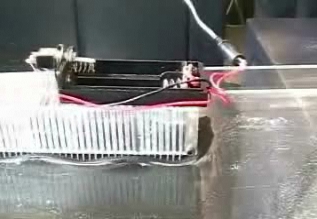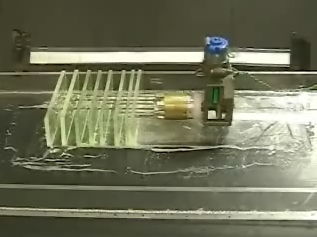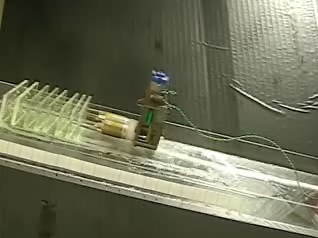 |
 |
 |
 |
| (a) | (b) | (c) | (d) |
In designing and fabricating autonomous vehicles capable of maneuvering in harsh environments, snails and other gastropods might not appear to be the ideal creatures to emulate. They are slow and leave an inconvenient trail of slime behind them. However, upon closer inspection, these creatures offer many unique advantages. They are mechanically simple as they only have one foot which is constantly in contact with the substrate. This simplicity makes them incredibly stable. And, most importantly, they are able navigate extremely complex terrains. Snails easily climb walls and ceilings, defying gravity in a manner that is unthinkable for modern vehicles.
Click on the images below to see videos of our prototype mechanical snails.
 |
 |
 |
 |
| (a) | (b) | (c) | (d) |
(a) Peristaltic snail on glycerin viewed from the side.
(b) Peristaltic snail viewed from below.
(c) Compression-wave snail traveling on a flat surface.
(d) Compression-wave snail traveling up an incline.